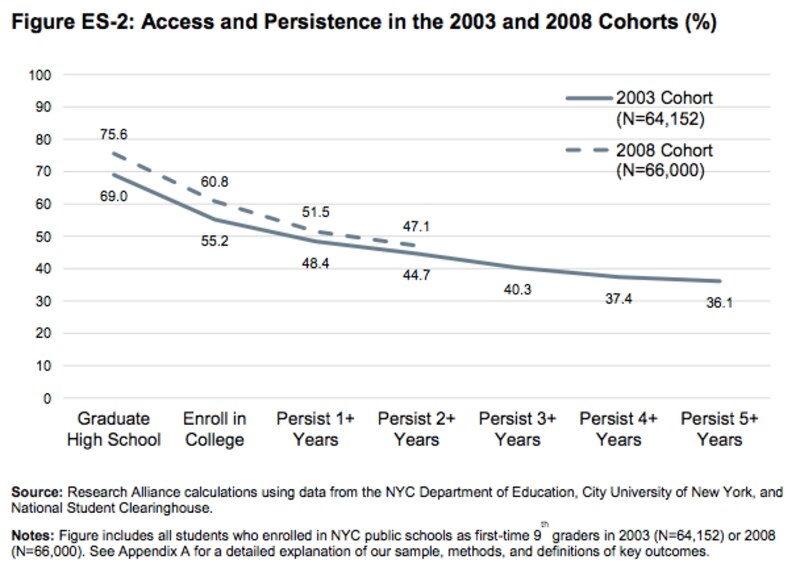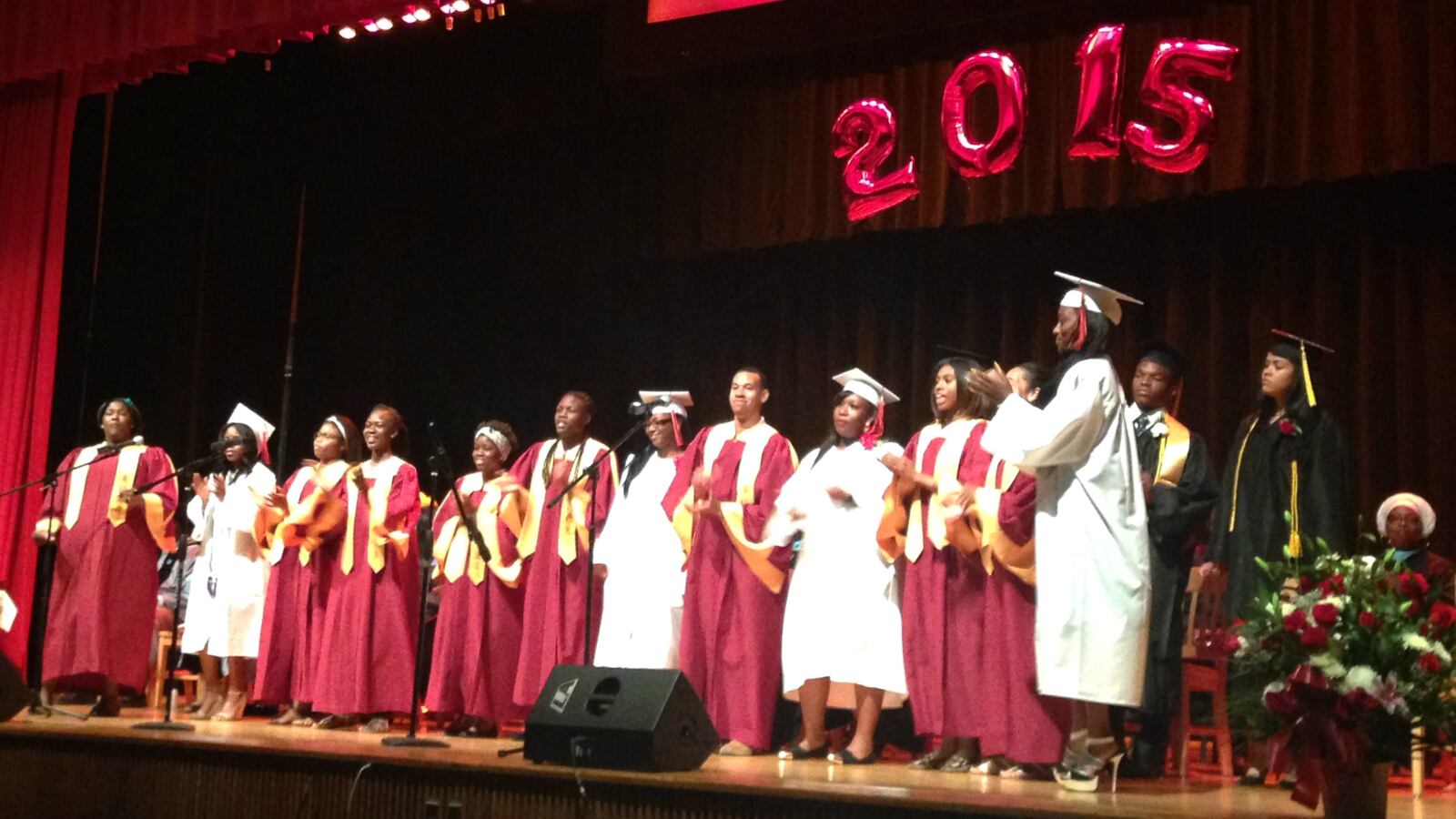Thousands of New York City students who enrolled in college as the high school graduation rate skyrocketed may have ended up in debt and out of the workforce — and without degrees.
That’s according to a new analysis by the Research Alliance for New York City Schools, the New York University institute charged with studying city schools data. The findings, based on students who entered high school during the Bloomberg administration, raise questions about Mayor Bill de Blasio’s approach to getting more students to college.
About 55 percent of students who entered high school in 2003 enrolled in college after graduation, the researchers found. For students who started ninth grade in 2008, that figure was 61 percent.
But the gains in college attendance eroded because many of the 2008 ninth-graders who previously might not have gone to college ended up dropping out.
Exactly why is impossible to tell from the data, the researchers say. But it reflects a national trend in which college costs, poor academic preparation, and general life challenges make it harder for low-income students to persist in college.

Whatever the explanation, the trend cuts against New York City’s heralded narrowing of racial achievement gaps. In fact, the researchers found, because black and Latino students dropped out without degrees more often than white and Asian students, racial achievement gaps actually widened slightly after students left high school.
From the study:
Broad improvements in college access have not necessarily produced more equitable outcomes for historically underrepresented groups as they have moved into and through the first years of college. Although we have seen gains in high school graduation and enrollment among all students, regardless of background, more advantaged students have been able to maintain these gains as they have transitioned into college in ways that underrepresented students have not. Figuring out how to promote more equitable outcomes is a central challenge facing the City’s policymakers and educators.
So far, the de Blasio administration has thrown its weight behind making it easier for students to get into college, even as the mayor has acknowledged that access and success are not the same thing and moved to add more challenging courses at city high schools.
The city aims to have two thirds of graduates “college ready” by a decade from now. For now, de Blasio’s College Access for All program ensures that middle school students visit colleges and high school students create a “college and career plan,” often with the help of dedicated counselors. The administration also negotiated fee waivers for students applying to CUNY schools, the most common destination for city graduates, and began offering the SAT exam during the school day, eliminating two barriers to entry.
“For a long time, a lot of kids were told they don’t have a chance to go to college, and that was so often wrong,” de Blasio told SAT-taking students this spring. “We’re sending the opposite message now: Anyone who wants to go to college has a chance to make it.”
On Tuesday, the city announced that nearly 30,000 more students had secured fee waivers when applying to CUNY — saving families more than $2.5 million in application fees.
“As the first person in my family to attend college, I understand how important it is to remove barriers,” Chancellor Carmen Fariña, who has frequently referenced her own shaky path to college when discussing the city’s new initiatives, said in a statement. (She has also blamed CUNY schools for letting students founder.)
De Blasio revealed the fee waiver total at the graduation ceremony of the Bronx School for Law, Government and Justice, where almost all of the graduates received waivers. (There, 84 percent of students who entered ninth grade in 2012 graduated four years later, according to city data. But only 64 percent went to college, and just 28 percent met CUNY’s standards.)
Johanie Hernandez, the school’s principal, praised the College Access for All initiative in a statement, saying, “These investments are about making college visible and real for every student at Bronx LGJ, from the time they join us in sixth grade to their high school graduation.”

